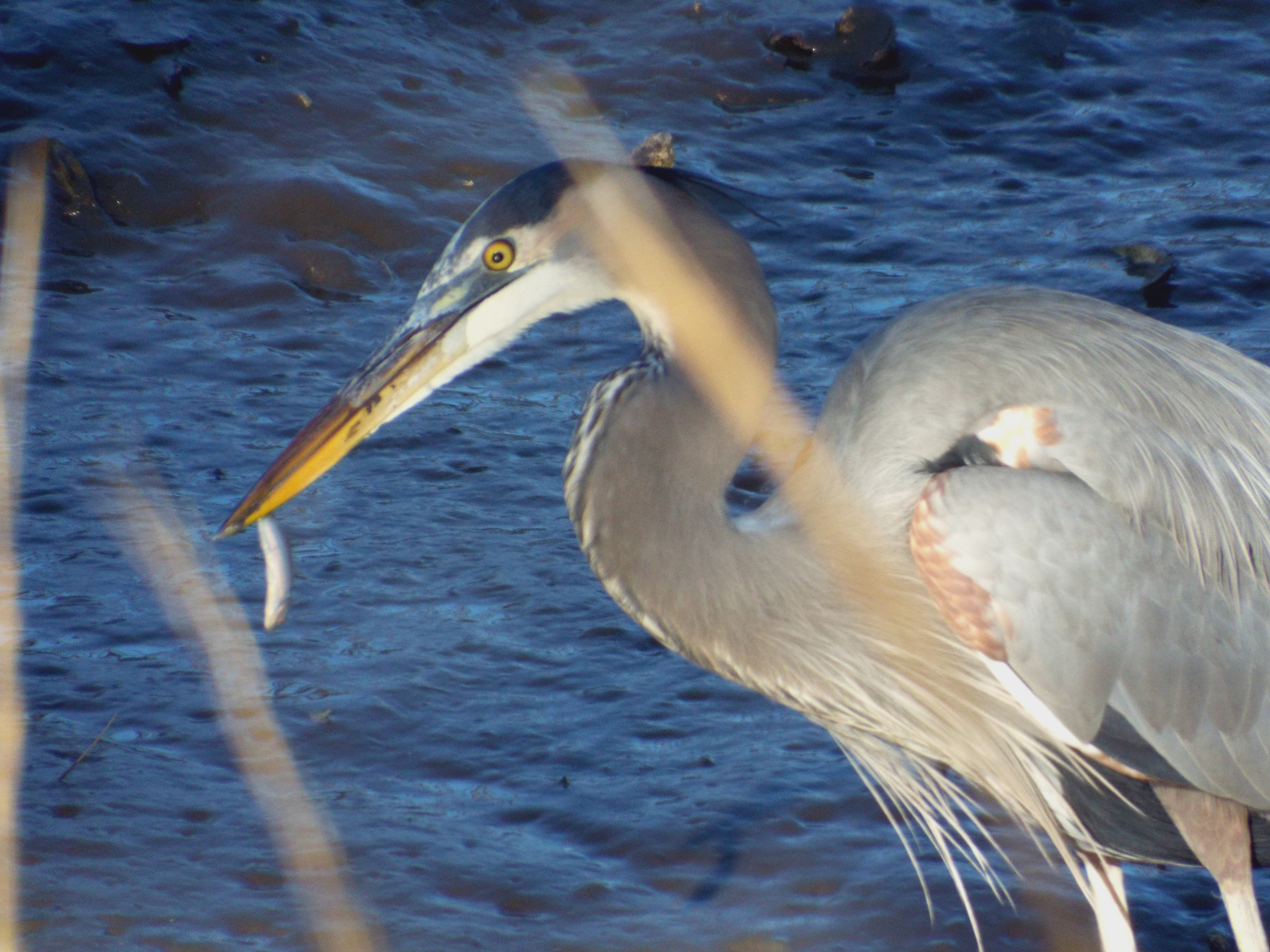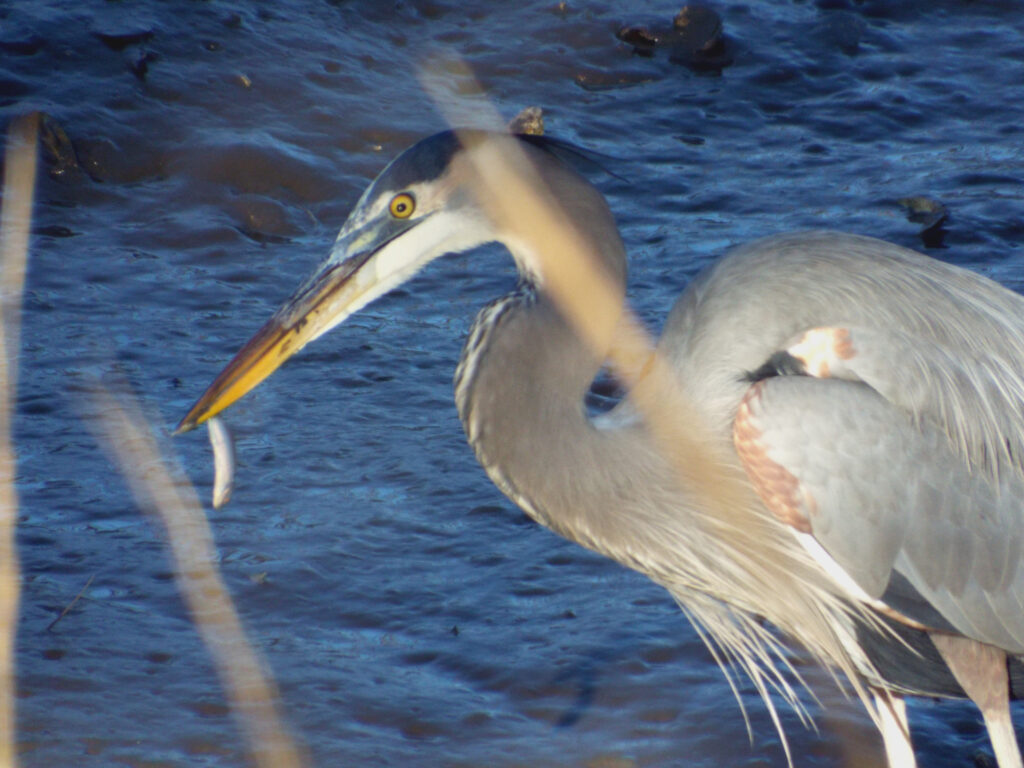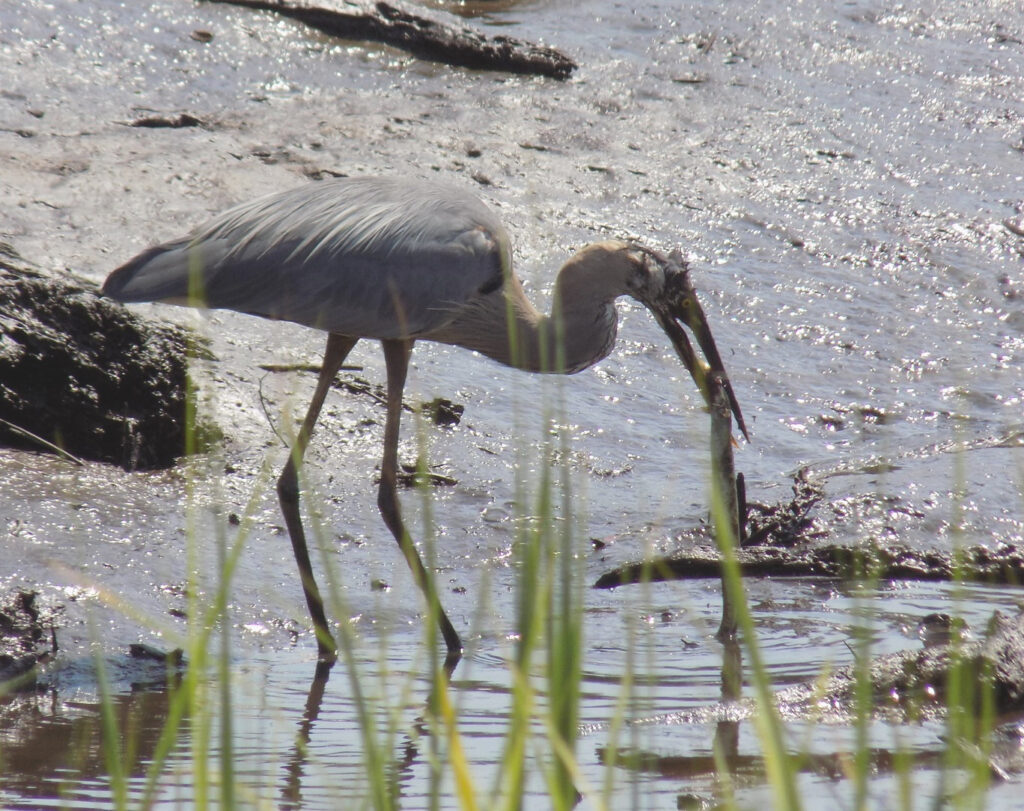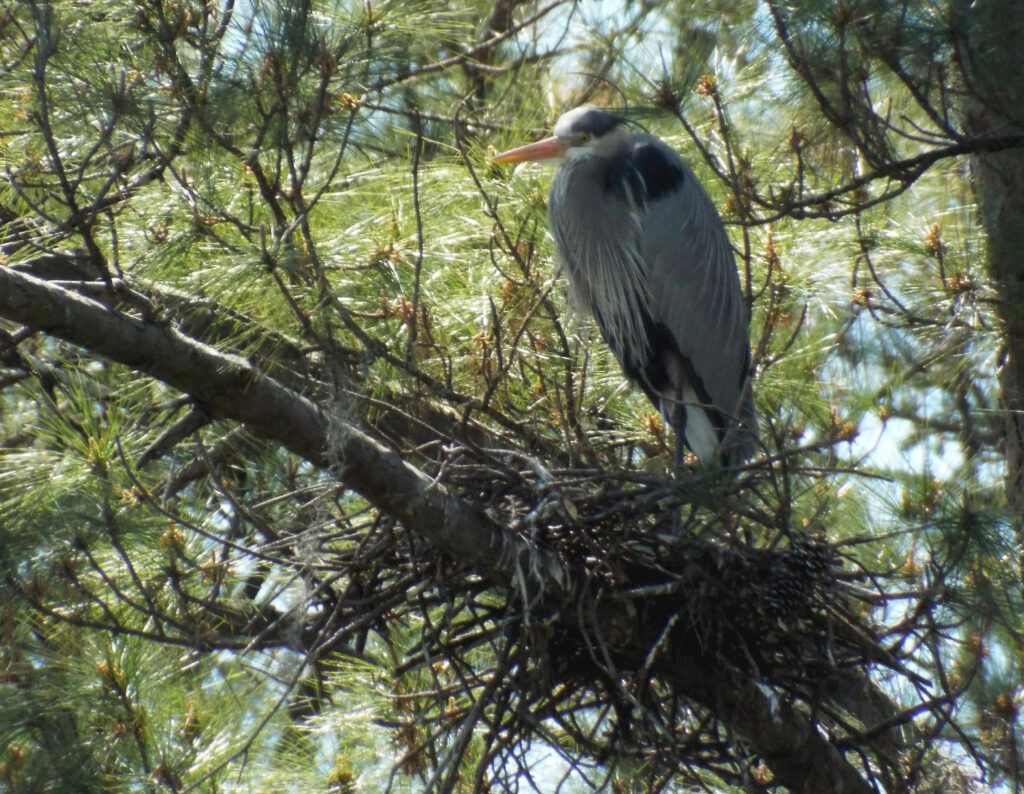



This week for Flora and Fauna Friday, we’re looking at the largest and most widespread of the North American Wading Birds: the Great Blue Heron (Ardea herodias).
The Great Blue Heron is an aptly named species. Their impressive size and gray-blue plumage make them difficult to miss or to even mistake for anything else in the USA. They stand a little over 3 feet tall and have a wingspan of over 6 feet. That impressive wingspan is only matched by Eagles and Pelicans in the Eastern US. Like most herons, the Great Blue Heron has long legs, a long, dagger-like bill, and a long, curved neck. All of that lankiness is necessary for how Herons feed. The Great Blue Heron is an ambush hunter. It stands still, almost statue-like, using its excellent vision to spot prey. When it acquires a target, it will retract its neck against its body, lean forward, and poise itself for attack. When the prey wanders into range it will launch its head forward with great speed and precision, grabbing or spearing its meal with that pointed bill. This is similar to how constricting snakes hunt.
Great Blue Herons are found throughout southern Canada, the United States, and Central America. This wide range is due to their large size and extremely versatile diet. Most Herons are fairly specialized in what kinds of habitats they hunt in and what foods they’ll eat. Many are restricted almost entirely to brackish or saltwater habitats. However, not the Great Blue Heron. The Great Blue Heron readily hunts anywhere there is water and eats anything it can catch. They will also hunt in fields, lawns and floodplains surrounding bodies of water. Their large size and long legs allow them to hunt in deeper water and eat larger prey than any of our other Herons. Their legs also allow them to hunt in fairly tall grass and their larger size allows them to tolerate colder temperatures than most Herons. They primarily eat fish, ranging in size from 2 inch minnows to 20 inch Bass and Carp. (They’re notorious for de-Koi-ing Koi ponds.) However, Great Blue Herons also eat: Snakes, small Turtles, hatchling Alligators, Frogs, Toads, Salamanders, Tadpoles, Eel, Mice, Rats, young Muskrats, Gophers, Squirrels, Rabbits, Grasshoppers, Crayfish, Shrimp, Crabs, and even Ducklings. I wasn’t exaggerating, they’ll eat pretty much anything they can swallow whole.
Down on Edisto you’re most likely to see Great Blue Herons in the salt marsh at low tide, hunting for minnows and shrimp along the tidal streams or on the edges of farm ponds stalking frogs and bream. Keep an eye out the next time you’re passing the marsh and you’ll likely see this steel-blue statue standing erect on the pluff mud or knee deep in brine with eyes on a crustacean.